We all know how important seat belts are in keeping us safe while driving. But have you ever heard of the Rear Belt Monitor Fault on Ford?
The rear belt monitor system in vehicles like Ford ensures passenger safety by alerting drivers if rear-seat occupants fail to fasten their seat belts. Utilizing sensors and indicators, it provides visual or audible warnings to encourage compliance with seat belt regulations, contributing to overall vehicle safety standards.
It’s a common issue that many Ford owners face, and it can be quite frustrating to deal with. Here, we will take a closer look at the Rear Belt Monitor Fault and how it works. We will also discuss the four most common causes of the fault and their solutions.
Additionally, we will share some preventive maintenance tips to help keep your system running smoothly. Lastly, we will troubleshoot some common issues related to the Rear Belt Monitor Fault so that you can rest easy knowing that your car is safe for you and your passengers.
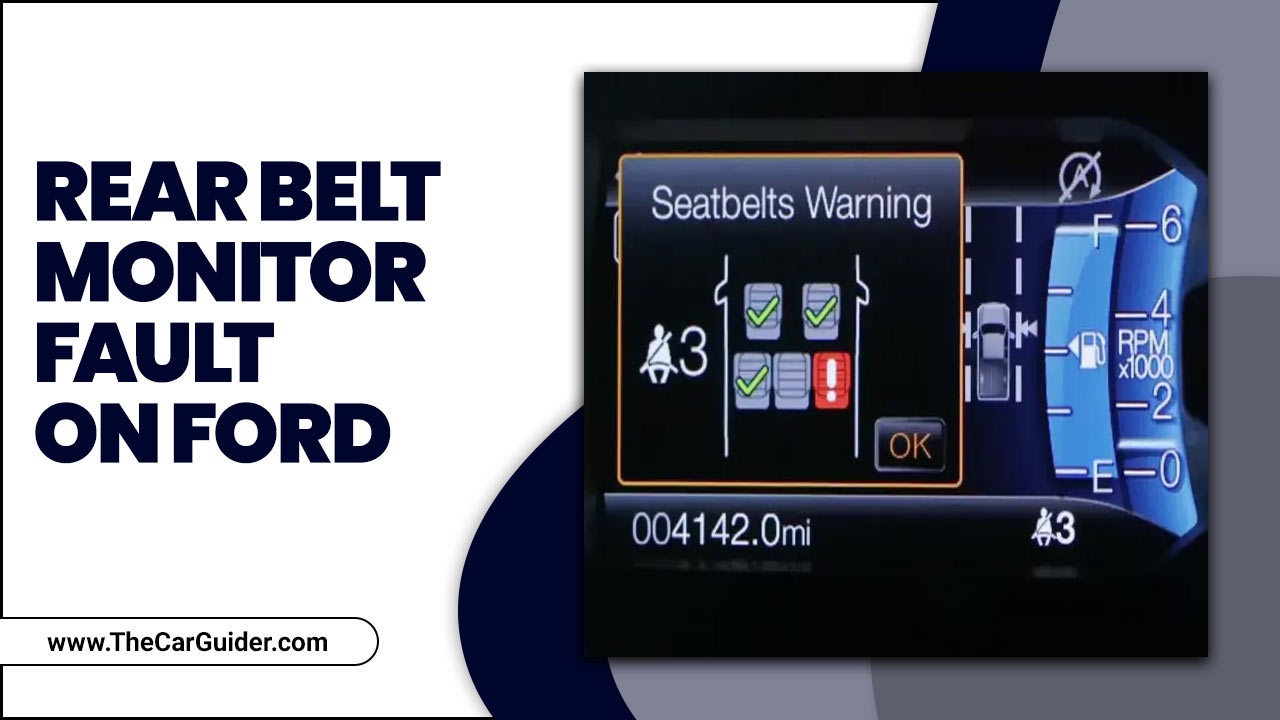
Key Takeaways
- The rear belt monitor in Ford vehicles ensures rear-seat passengers are wearing seat belts.
- Common causes of faults include sensor malfunctions, wiring issues, faulty control modules, mechanical problems, and software glitches.
- Solutions include sensor replacement, wiring repairs, control module replacement, software updates, and mechanical component fixes.
- Regular maintenance, testing, and repairs help ensure system functionality and safety.
How Does The Rear Belt Monitor System Work?

The Rear Belt Monitor System is a safety feature in Ford vehicles that helps ensure passengers in the rear seats wear seat belts. When a fault occurs with this system, it is important to address it promptly to maintain the safety of your vehicle. The rear belt monitor system works by:
- Sensors in the rear seats detect whether passengers are wearing their seat belts.
- Activating a warning light or sound if rear passengers are not wearing seat belts while the vehicle is in motion.
- Providing a visual or audible alert reminds occupants to fasten their seat belts for safety.
- Helping to promote seat belt usage and enhance passenger safety while driving.
What Are The Symptoms Of A Bad Belt Tensioner?
A belt tensioner is a crucial component in a vehicle’s engine system, responsible for maintaining the proper tension in the belts that drive various engine components. When a belt tensioner begins to fail, several symptoms may indicate a problem, including:
- Unusual noises
- Vibrations
- Belt wear
One of the most common signs of a bad belt tensioner is a squeaking or grinding noise from the engine area. If you feel excessive vibrations from the engine while driving, it could be a sign that the belt tensioner is failing.
Inspecting the belts for signs of wear or damage can also help identify a faulty tensioner. If the belts appear cracked, frayed, or loose, it may be due to a malfunctioning tensioner.
5 Causes And Solutions For Rear Belt Monitor Fault On Ford
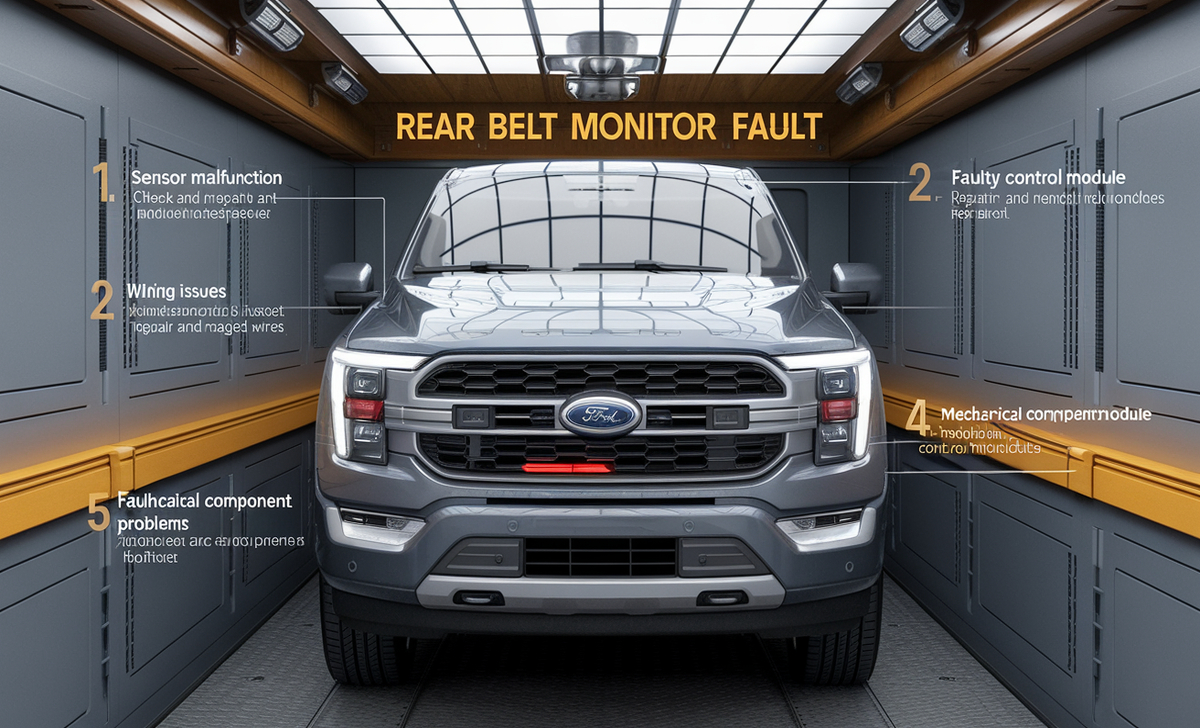
Ford is a renowned automobile manufacturer known for its commitment to safety and reliability. However, like any other vehicle, Ford cars may encounter faults and issues from time to time.
One common problem Ford owners may face is the rear belt monitor fault. This fault occurs when the rear seatbelt monitor malfunctions, responsible for detecting whether the seatbelt is properly fastened.
Here are discussions on 5 causes and solutions for rear belt monitor fault on Ford:
1.Sensor Malfunction
One common cause of rear belt monitor faults is sensor malfunction. The rear belt monitor system relies on sensors to detect whether passengers in the back seat are wearing seat belts.
If these seat belt sensor become faulty or damaged, they may not accurately detect whether a seat belt is being worn, leading to a fault in the system. Various factors, such as wear and tear, electrical issues, or physical damage, can cause sensor malfunctions.
2.Wiring Issues
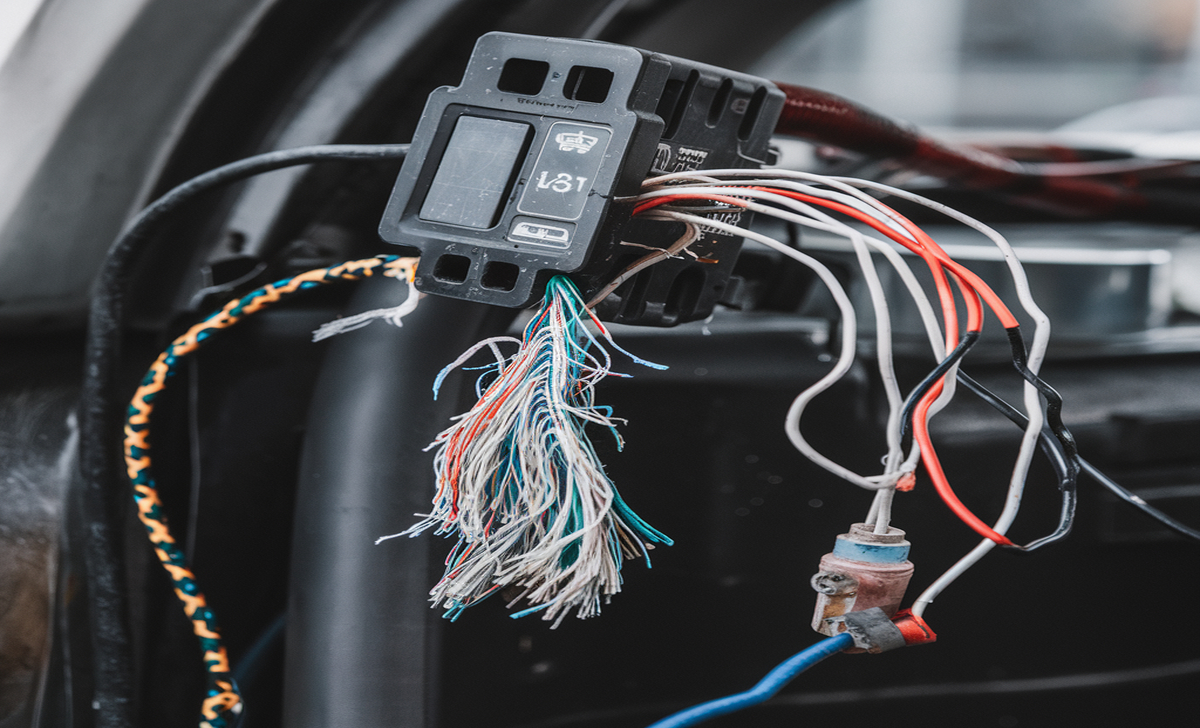
One of the common causes of rear belt monitor faults is wiring issues. Over time, the wires that connect the rear belt monitor to the vehicle’s electrical system can become damaged or frayed.
This can result in a loss of communication between the monitor and the vehicle’s computer, causing the rear belt monitor to malfunction. In some cases, the wiring issues may be easily identifiable, such as if there is visible damage to the wires.
3.Faulty Control Module
One common cause of rear belt monitor faults is a faulty control module. The control module is responsible for monitoring the status of the rear seat belts and alerting the driver if there is a problem.
If the control module becomes damaged or malfunctions, it may not be able to accurately detect the status of the rear seat belts, leading to false fault alerts or a failure to detect actual faults. In some cases, a software update or reprogramming of the control module may resolve the issue.
4.Mechanical Component Problems
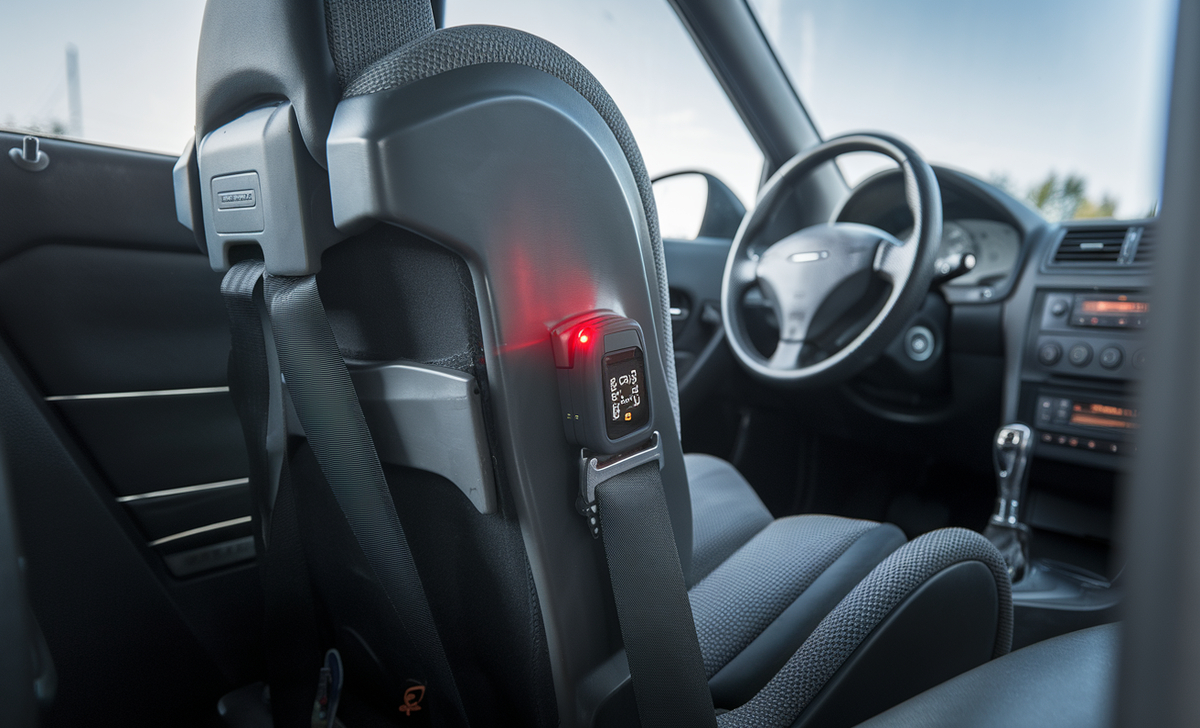
Mechanical component problems are one of the common causes of rear belt monitor faults. These faults can occur when there is an issue with the mechanism that detects whether or not a passenger is wearing their seatbelt.
Some examples of mechanical component problems that can lead to rear belt monitor faults include
- Faulty sensors,
- Wiring issues, or
- Problems with the seatbelt retractor mechanism.
When these components fail, it can result in false alarms or a failure to detect when a passenger is not wearing their seatbelt.
5.Software Glitch Or Programming Issue
A notable cause of rear belt monitor faults on Ford vehicles is software glitches or programming issues. These faults can arise due to various factors, including updates or changes in software algorithms.
Instances such as draining car batteries, engaging the parking brake, or not filling in required fields during software updates can trigger glitches. Additionally, certain models of Ford cars, trucks, or other affected vehicles might be more susceptible.
Extra care during software updates and promptly addressing any issues through authorized car repair or company information channels is crucial to mitigate the impact of software-related faults.
Solutions For Rear Belt Monitor Faults
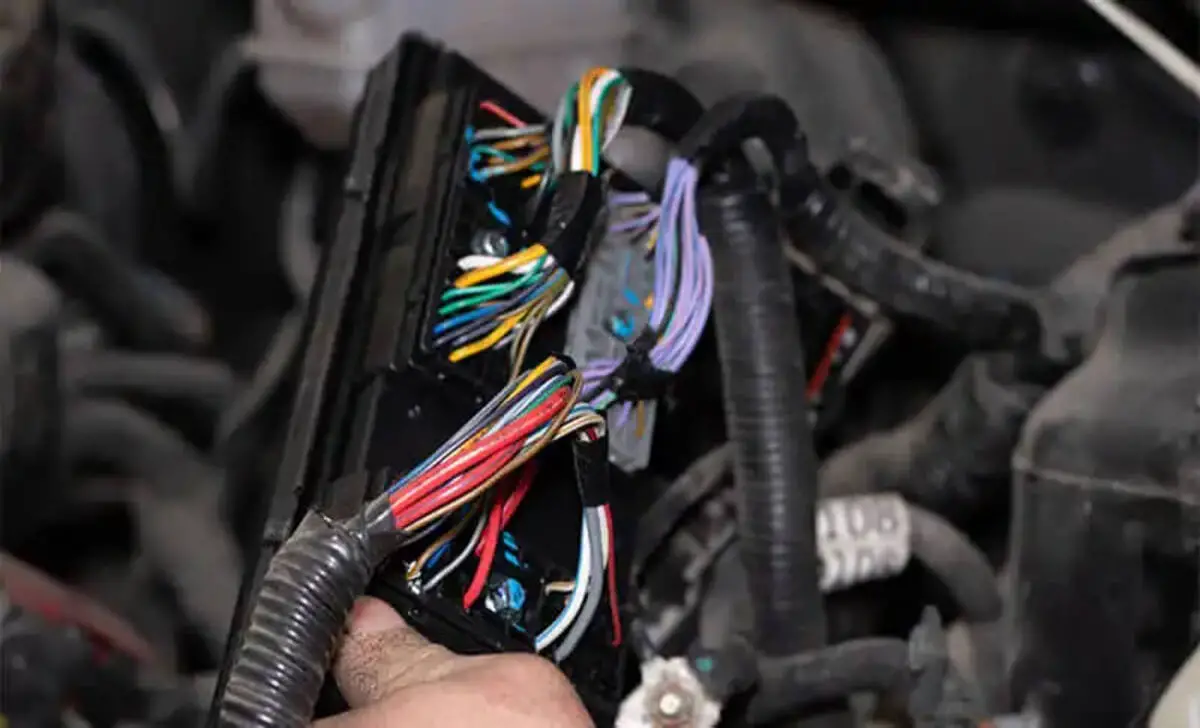
When addressing rear belt monitor faults, it is crucial to have a comprehensive understanding of the available solutions.
These faults can potentially compromise the safety of occupants in a vehicle, so it is essential to address them promptly and effectively. Here, we will explore four solutions that can effectively tackle rear belt monitor faults.
Sensor Replacement
If you’re experiencing faults with your rear belt monitor, one possible solution is to replace the sensor. The rear belt monitor is an important safety feature that alerts you if any rear seat passengers have not fastened their seat belts.
If the sensor is faulty, it may not accurately detect whether the seat belts are properly fastened. By replacing the sensor, you can ensure that this crucial safety feature functions correctly.
Wiring Repair Or Replacement
When rear belt monitor faults, one possible solution is to repair or replace the wiring. Wiring issues can often be the cause of faults in the rear belt monitor system, such as a malfunctioning sensor or an inaccurate reading.
If there are any visible signs of damage to the wiring, such as frayed or broken wires, it may be necessary to repair or replace them. This can help ensure that the rear belt monitor functions properly and provides accurate readings.
Control Module Replacement
One possible solution for rear belt monitor faults is to replace the control module. The control module is responsible for monitoring the rear seat belts and detecting any faults or malfunctions.
If the module is not functioning properly, it can lead to false alarms or a complete failure of the rear belt monitor system.
By replacing the control module, you can ensure that the rear belt monitor system is operating correctly and providing accurate information about the status of the rear seat belts.
Update Software Or Reprogram The Module To Address Glitches

A key solution for rear belt monitor faults is updating the software or reprogramming the module to fix glitches. This process is often done through authorized Ford repair centers or the Ford Pass app. It addresses issues such as faulty sensor readings or incorrect alerts.
Updating the software can also improve compatibility with various vehicle systems, like cruise control and exhaust components. Proper calibration during software updates is essential, especially for diesel engines or models with passenger seat sensors.
Regular checks for wiring issues or body repairs are also recommended to ensure the rear belt monitor system functions effectively.
Mechanical Component Repair Or Replacement
When the rear belt monitor faults, one possible solution is to repair or replace the mechanical components. The rear belt monitor is designed to alert the driver if a passenger in the backseat has unbuckled their seatbelt.
If this system is not functioning properly, it can compromise the safety of passengers in the vehicle. Sometimes, the issue may be a simple mechanical problem. Try repairing that, such as a loose connection or a faulty sensor.
However, if the components are damaged beyond repair, they may need to be replaced. We always recommend that when you face a problem, you replace parts for your car.
Preventive Maintenance Tips For The Rear Belt Monitor System
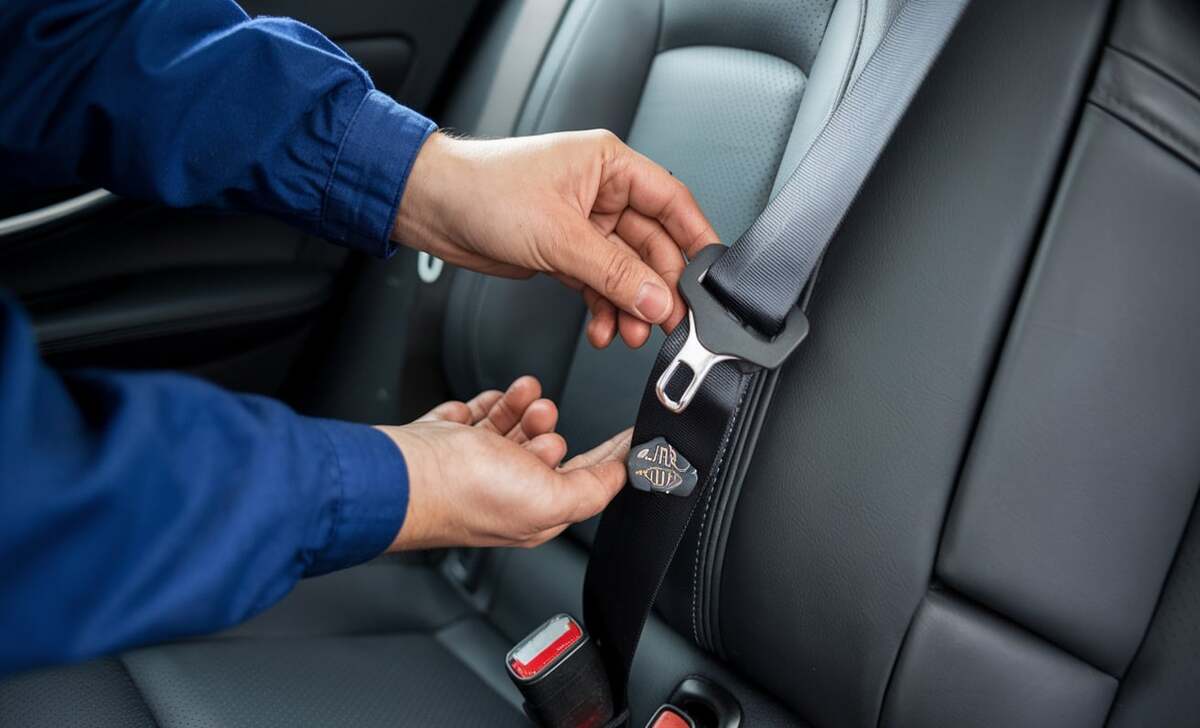
- Inspect rear seat belts for wear or damage.
- Keep the rear seat area clean and debris-free.
- Test the rear belt monitor system periodically.
- Have any issues been repaired or replaced immediately.
- Follow recommended service intervals for Ford vehicles.
To ensure the proper functioning of the rear belt monitor system in your Ford vehicle. Regularly inspect the rear seat belts for any signs of wear or damage. Look for fraying, tears, or cuts in the belt material. If you notice any issues, have them repaired or replaced immediately.
Keep the rear seat area clean and free from debris. Dust, dirt, and other particles can interfere with the sensors that detect if the rear seat belts are properly fastened. Regularly vacuum and wipe down the seat belts and surrounding areas.
Test the rear belt monitor system periodically by buckling and unbuckling the rear seat belts. Ensure the system recognizes when the belts are properly fastened and when they are not. If you notice any issues or inconsistencies, have it inspected by a qualified technician.
Follow all recommended service intervals for your Ford vehicle. Regular maintenance checks can help catch any potential rear belt monitor system issues before they become major problems.
Conclusion
The issue of a rear belt monitor fault on Ford vehicles is a cause for concern and should not be taken lightly. Ford owners need to address this issue promptly and seek assistance from qualified professionals to ensure the safety of all passengers. As a reputable car manufacturer, Ford is responsible for addressing and resolving this issue efficiently and effectively.
We urge all Ford owners to stay informed and take necessary action to ensure the proper functioning of their rear belt monitors. Safety should always be a top priority for our vehicles, and it is crucial to address any potential faults or malfunctions.
Frequently Asked Questions
1.What Are The Long-Term Effects Of Rear Belt Monitor Faults On Ford Vehicles?
Long-term effects of rear belt monitor faults on Ford vehicles can compromise passenger safety. They may result in increased risks of injury or fatalities in the event of a collision. Failure to address issues promptly could lead to potential legal liabilities for Ford Motor Company and undermine the effectiveness of seat belt sensors in ensuring passenger protection.
2.How To Reset Rear Belt Monitor Fault On Ford Vehicles?
To reset a rear belt monitor fault on Ford vehicles, start by ensuring all rear seat belts are securely fastened. Next, turn the ignition on without starting the engine. Within 60 seconds, buckle and unbuckle the rear seat belts at least three times. Finish by turning off the ignition. This should reset the rear belt monitor system.
- Securely fasten all rear seat belts
- Turn the ignition on without starting the engine
- Buckle and unbuckle the rear seat belts at least three times within 60 seconds.
3.Can You Drive In The United States With A Rear Belt Monitor Fault?
In the United States, driving with a rear belt monitor fault, especially in a Ford Ranger or any vehicle, is not recommended as it compromises passenger safety.
A faulty rear belt monitor may fail to alert drivers of unsecured rear-seat passengers, increasing the risk of injury in the event of a collision. It’s essential to address such faults promptly for optimal safety.
4.Does Any Truck Have The Optional Rear Inflatable Belts?
Yes, some trucks offer optional rear inflatable belts for enhanced safety. These belts deploy airbags during a collision to reduce the risk of injury to rear-seat passengers.
However, availability may vary depending on the truck model and trim level. For specific information, consult the manufacturer’s website or visit a dealership. Additionally, ensure compliance with the service DMCA policy when seeking relevant information online.
5.Is The Middle Seat In The Back Complaining About Seat Belts?
If the middle seat in the back is complaining about seat belts, it could indicate a malfunction in the rear belt monitor system. Checking the air filter, as well as inspecting sensors and wiring, might help diagnose and resolve the issue. Additionally, ensuring proper seat belt alignment and functionality is essential for passenger safety and compliance.
6.What Are The Common Causes Of Rear Belt Monitor Issues?
Common causes of rear belt monitor issues include worn brake pads, a faulty timing belt, and power steering problems. Roof boxes may cause pressure on the rear belt monitor system. Dash cams can interfere with the monitor, and ill-fitting seat covers can affect the sensors.
Other causes include a warning light for the airbag system, malfunctioning car parts, and recalls on specific models. A brake light may indicate a fault, while tire pressure can also affect the system. Dashboard warning lights often alert to faults.